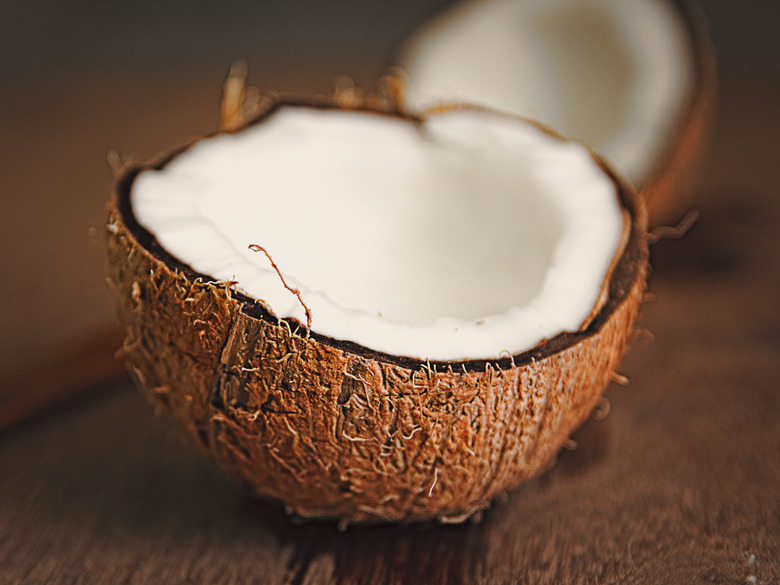What Are The Adaptations Of A Coconut Seed?
The coconut palm tree is a widely-dispersed species due to special adaptations developed by its seed. The seed floats due to an internal air cavity. The coconut's external husk protects the internal seed from predators and the salt of the ocean. The coconut palm is one of the most successful of the ocean drifter species.
Coconut Palm
Coconut Palm
The coconut palm tree goes by the Latin name Cocos nucifera. It belongs to the Arecaceae family and its coconut seeds are an important tropical food source. The tree grows 80 to 100 feet tall with a single trunk ringed with leaf scars. The feathery leaves atop the trunk are up to 18 feet long. The trees flower at four to six years and produce a seed featuring many adaptations to propagate the species.
Coconut Seed
Coconut Seed
The seeds of the coconut palm tree are some of the largest in the world. The oval-shaped nuts are typically 12-by-10-inches wide. The green coconut fruit turns brown as it matures. Coconut seeds are produced year-round with the trees averaging from 50 to 200 coconuts annually. The seed is well adapted to survival while floating in the ocean for years. Its waterproof fibrous husk is encased in a tough outer layer called an exocarp.
Ocean Dispersal
Ocean Dispersal
The coconut seed is especially well adapted to increasing its range by the method of ocean dispersal. The seed floats when its outer layers dry out. The buoyant coconuts drift on ocean currents and end up on tropical beaches where they germinate and take root. Coconuts have traveled the seas to increase their habitat from the Malay peninsula to low-lying areas near the sea in the Caribbean, Australia, the South Sea islands, and anywhere else the temperature and rainfall lie within the coconut palm's growth parameters.
Food and Water
Food and Water
The coconut seed features anatomical adaptations that allow it to survive long ocean voyages to atolls and isolated tropical islands. The seed carries its own supply of food and water. The coconut palm embryo is nourished by the white coconut meat called the endosperm. The water and meat are contained in a hard bony layer called the endocarp. The tiny embryo is embedded in the food tissue near a germination pore.
Cite This Article
MLA
Whitmer, Phil. "What Are The Adaptations Of A Coconut Seed?" sciencing.com, https://www.sciencing.com/adaptations-coconut-seed-8161213/. 13 March 2018.
APA
Whitmer, Phil. (2018, March 13). What Are The Adaptations Of A Coconut Seed?. sciencing.com. Retrieved from https://www.sciencing.com/adaptations-coconut-seed-8161213/
Chicago
Whitmer, Phil. What Are The Adaptations Of A Coconut Seed? last modified March 24, 2022. https://www.sciencing.com/adaptations-coconut-seed-8161213/
